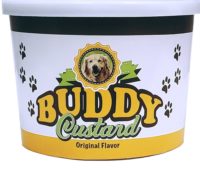With increasing intensity, consumers seek products that are preservative-free, organic and healthy. This wellness trend is here to stay, and continues to penetrate deeper into major consumer demographics. Health-and-wellness products already represent 20% of the packaged food market and are growing twice as fast. Within the last few years, the wellness trend has even grown to include concerns over the safety of food packaging.
As consumers grow more determined to understand the ingredients in their food, they have begun to realize that packaging plays a significant role in the quality of their food. Anything that touches the food product, called food-contact packaging, deserves scrutiny and investigation. What good is a healthy product if it’s packaged in material that can degrade the food or introduce unwanted ingredients? Since packaging is often considered the final element of a product, it can be considered an out-gredient, therefore it is important to understand the underlying materials used in food packaging.
Ingredients found in the packaging are just as important as ingredients found within the food itself. These additives are tested to the highest toxicological standards to guarantee that consumers are purchasing holistically healthy food products. Consumer brands aren’t waiting. That’s because the industry is taking no risk and is proactively replacing any material that could shed any doubt on the safety of the materials used in food packaging.
Like antioxidants found in healthy and natural foods, antioxidants are also used in food packaging materials to protect the plastic during the manufacturing and lifecycle of the product. All antioxidants used in packaging have been heavily tested over the years and are inherently safe, but the industry is now looking at the next level, ensuring that no impurity or potential degradant from these materials that might be of concern will touch our food, even at infinitesimal levels.
For example, one of the antioxidants used in packaging, TNPP, is a safe material, but is manufactured from nonylphenol as a precursor and could lead to a few parts per million residual presence of nonylphenol in the packaging. Nonylphenol is under scrutiny in several countries for its environmental impact, therefore the industry is proactively replacing it with new solutions. Government regulatory agencies like the U.S. Food and Drug Administration (FDA) and the European Food Safety Authority (EFSA) are probing historical additives that are currently being used in food packaging. In China, a new law proposal will restrict the use of nonylphenol-containing additives.
New solutions are emerging that are replacing these older antioxidant technologies. These new solutions are tested with methodologies that did not exist in the past and give the new technologies an edge over their older alternatives in terms of safety and peace of mind for packaging manufacturers.
The benefit of new additives that keep up with or even surpass agency regulatory standards is they do not pose the threat of forcing un-forecasted changes in polymer production, processing and conversion due to regulatory changes.
With regulations in flux, it is important to understand what food packaging is made of. Whether you are a brand owner, resin producer, converter or processer, packaging additives can dramatically affect business each and every day. By understanding what ingredients food packaging and packaging materials contain, the supply chain can better address and meet the consumer’s need for safe and reliable packaging while simultaneously overcoming the global regulatory challenges and increasing operational performance inefficiencies.

